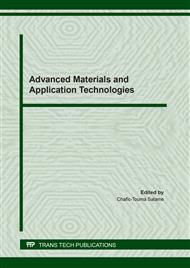p.126
p.133
p.143
p.159
p.168
p.177
p.183
p.189
p.203
Morphology and Mechanical Properties of a Composite Coating by Electrostatic Dry Spray Method
Abstract:
Powder spray coating was used for many applications such as paint decoration and protection against corrosive environments. The electrostatic spray method is used to lower the manufacturing cost and the environmental effect during the production process. It is done by electrostatic device and spray gun to create a layer on the substrate to play a protective role. Different dry powders were mixed to form a composite mixture consisted of Al2O3 and SiC or ZrSiO4 with Al powder as a binder. The powders mixture was deposited by electrostatic spray technique with a high voltage of 15 kV on a low carbon steel substrate of (40 x 10 x 4) mm in dimensions. Two groups of mixtures were used to form the coating layers. Powders of Al2O3 with (20 and 40) weight percent (wt%) of SiC as the first group and (20 and 40) wt% of ZrSiO4 as the second group were used. 5 wt% of Al powder was added as a binder, and the samples were heat treated at 900 C° for 2 hours. A detailed characterization of the composite coating layers was performed using XRD, SEM, and EDX, as well as, micro-hardness measurements. The obtained surface composite layers were smooth and having good particle distribution which leads to enhance roughness values (Ra). Furthermore, the hardness increased with increasing the amount of carbide and zirconia, and the obtained layers show no presence of defects or cracks.
Info:
Periodical:
Pages:
168-174
Citation:
Online since:
May 2021
Authors:
Price:
Сopyright:
© 2021 Trans Tech Publications Ltd. All Rights Reserved
Share:
Citation:


